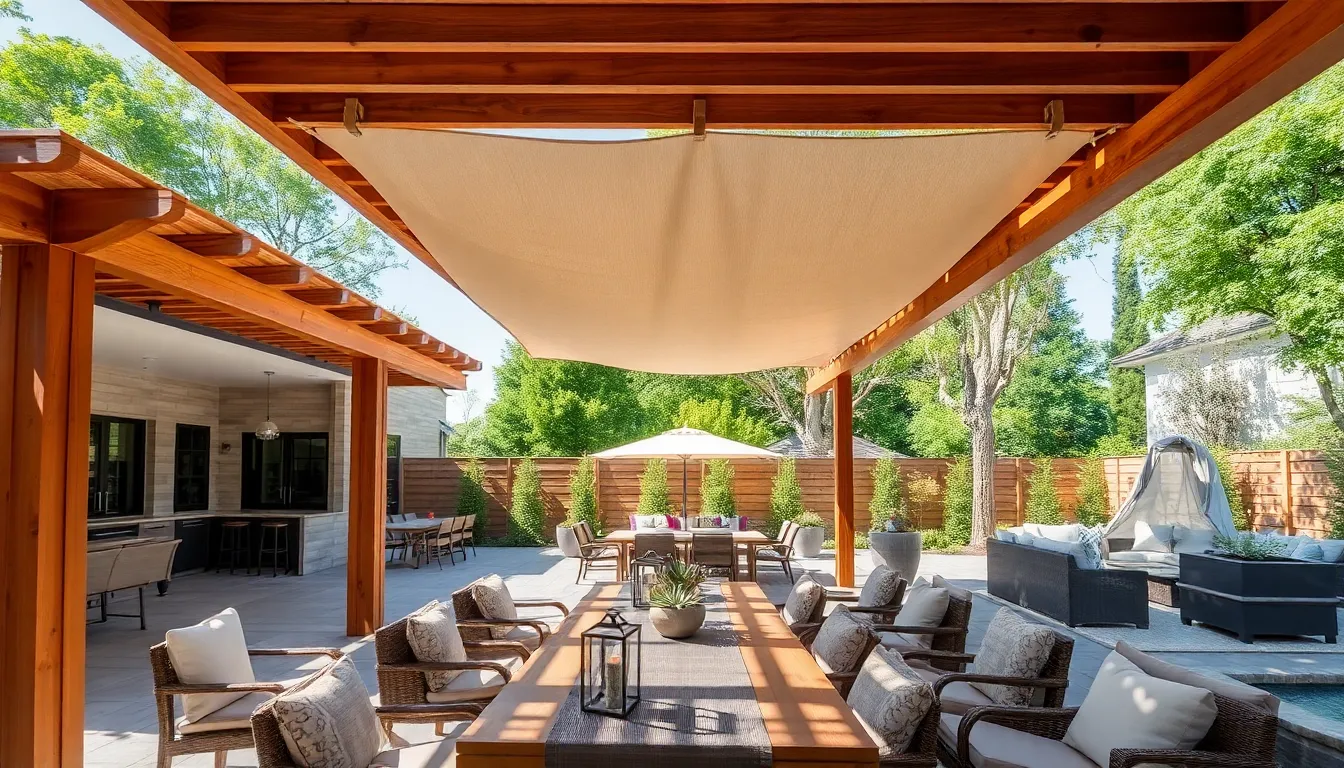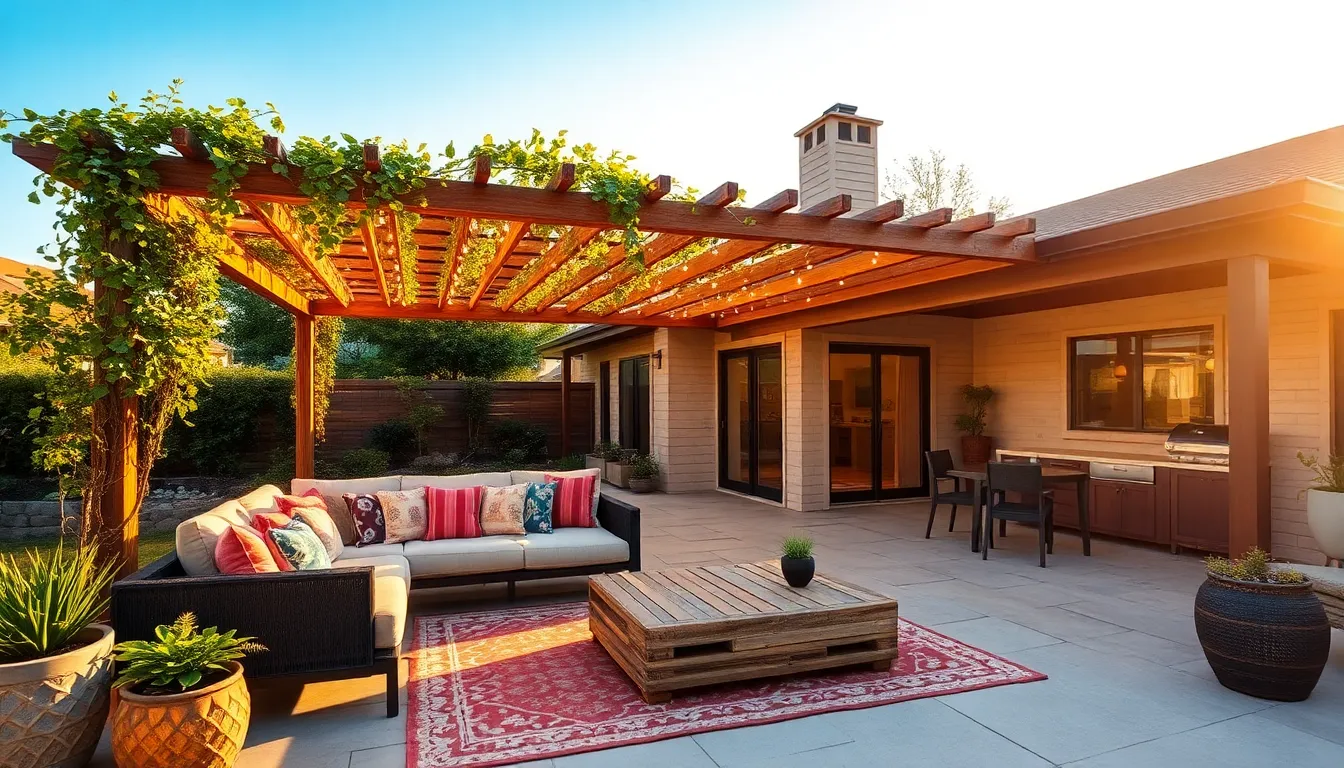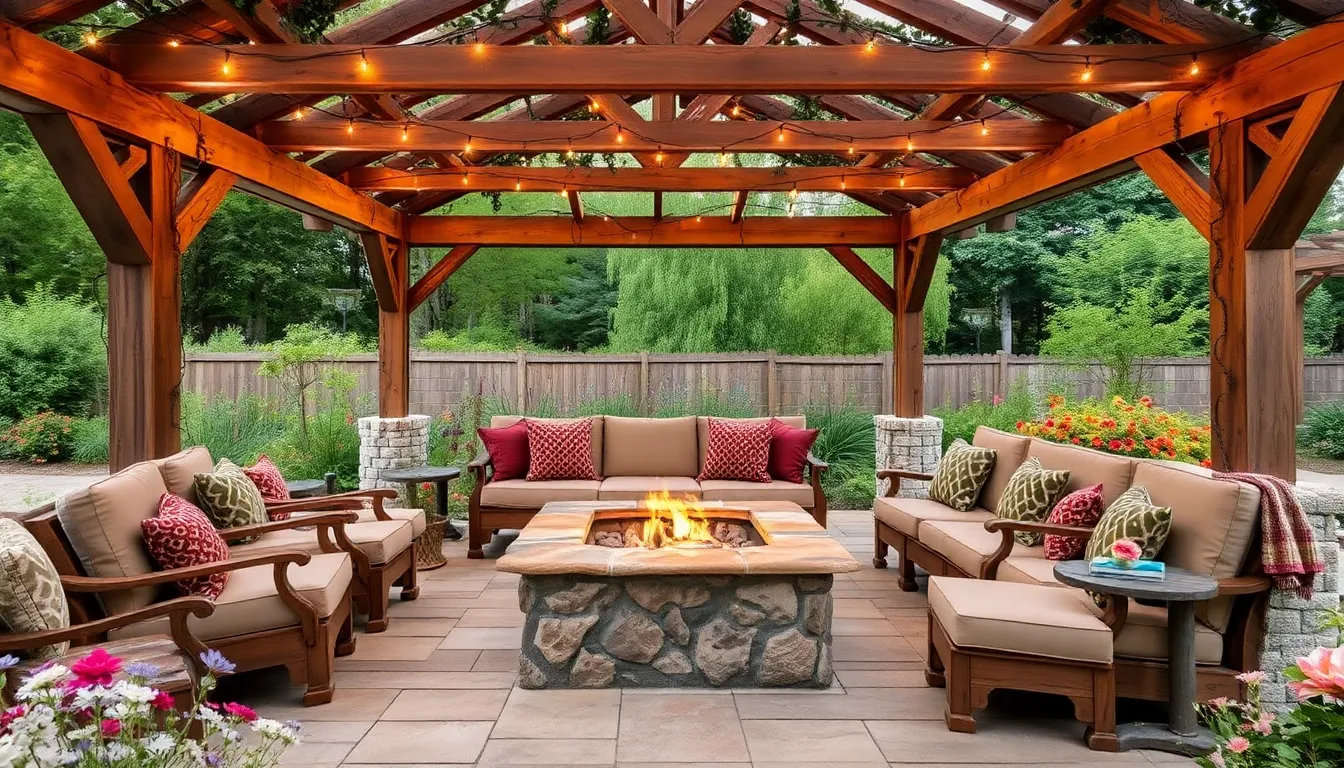Imagine stepping into your backyard sanctuary, where a gentle breeze rustles through the leaves and dappled sunlight dances on your patio. Whether you’re new to outdoor design or a seasoned pro, “20 Shade-Providing Patio Roof Ideas” invites you to explore a world of elegance and comfort, turning even the simplest patio into an inviting retreat. This guide is more than a collection of ideas; it’s your key to unlocking the full potential of your outdoor space, blending style with functionality.
With the right shade, your patio becomes a versatile extension of your home, perfect for morning coffee, lazy afternoons, or lively gatherings. From pergolas to retractable awnings, this guide offers practical solutions that enhance your outdoor experience while providing the protection you need. Dive in with confidence, knowing these ideas will inspire you to create a beautiful, shaded oasis that reflects your personality and meets your lifestyle needs.
Install Retractable Awning Systems
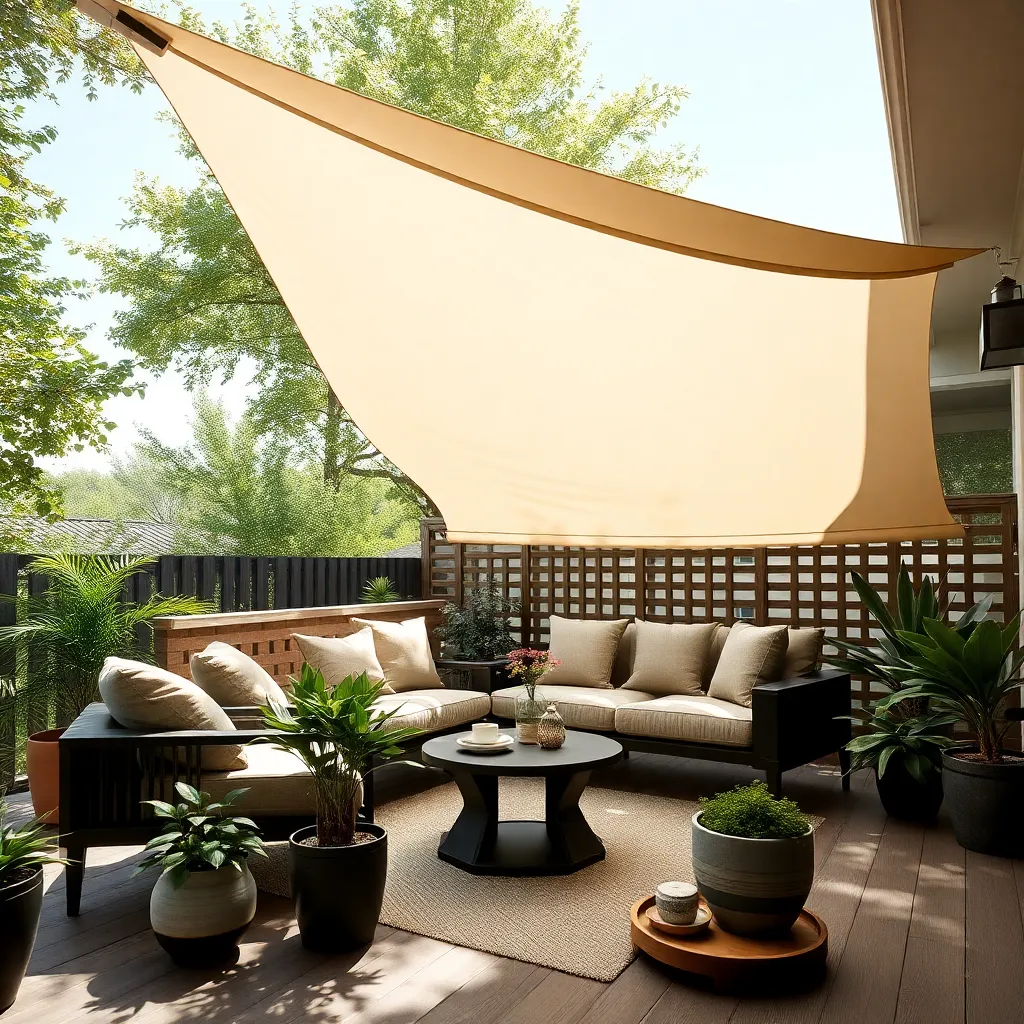
Consider installing a retractable awning system to transform your patio into a versatile outdoor retreat. These systems offer the flexibility to enjoy sunshine when desired and provide shade when needed, making them perfect for varying weather conditions. Opt for durable materials like aluminum frames with UV-resistant fabric to ensure longevity and low maintenance. Measure your patio area accurately to select an awning that fits perfectly, and consider motorized options for convenient operation.
For a clean installation, ensure your awning is mounted securely to the wall or roof structure, utilizing appropriate anchors for stability. Beginners should start with pre-packaged kits that include all necessary components, whereas advanced DIYers might explore custom options for unique spaces.
- Choose fabrics in lighter colors to reflect heat and keep your patio cooler.
- Incorporate weather sensors that automatically retract the awning during adverse conditions for added safety.
With these tips, your patio will be ready to provide comfort and style all year round.
Incorporate Lush Green Pergolas
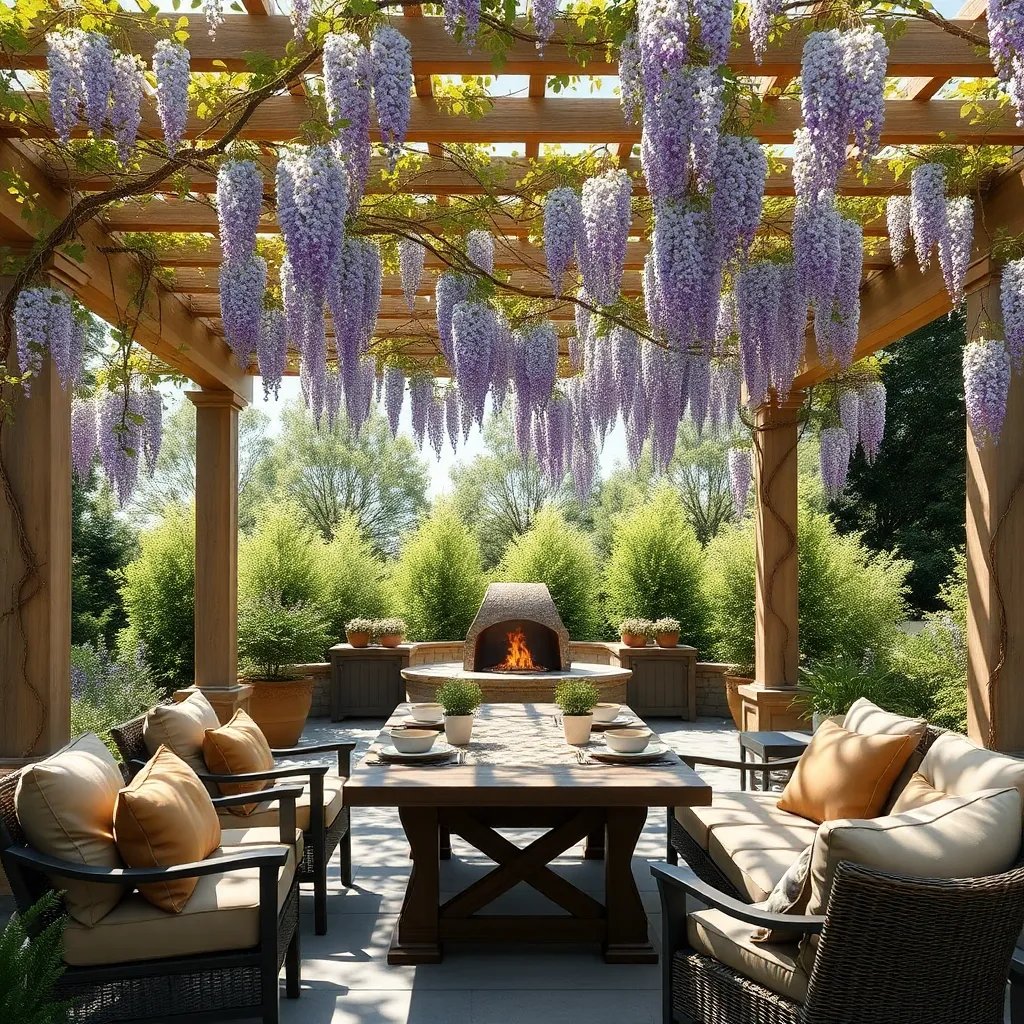
Lush green pergolas offer a stunning way to blend natural beauty with functional design, providing a perfect mix of shade and style for your patio. Begin by constructing a sturdy framework using materials like cedar or pressure-treated wood, which are both durable and weather-resistant. Use climbing plants such as wisteria, ivy, or grapevines to create a living canopy that not only provides ample shade but also enhances the visual appeal with refreshing greenery.
For beginners, start with a simple square or rectangular design, ensuring the structure measures at least 7 feet high to allow for comfortable movement underneath. Advanced gardeners might consider adding adjustable slats or a retractable canopy for added flexibility in controlling sunlight. Incorporate features like built-in planters or hanging baskets to introduce additional layers of greenery, creating a verdant oasis that will make your outdoor space both inviting and serene.
Opt for Adjustable Shade Sails
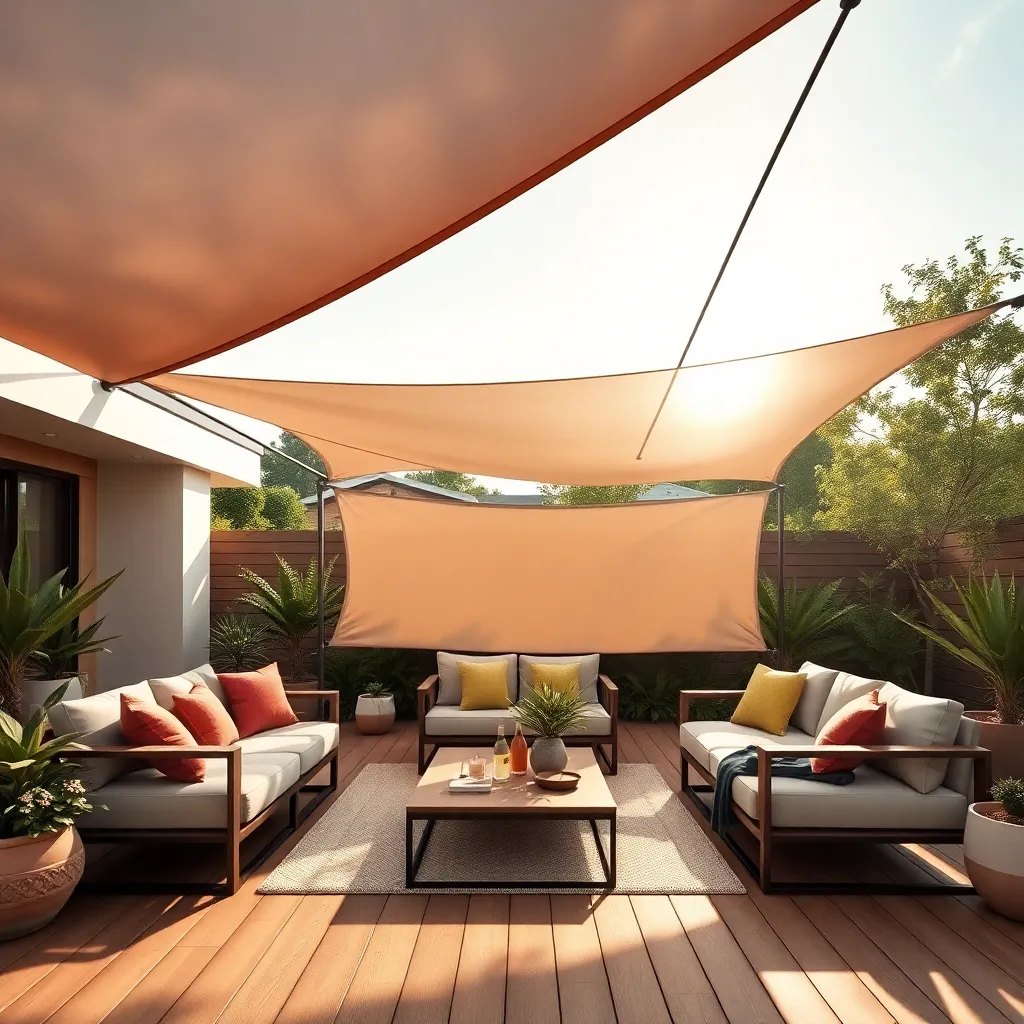
Adjustable shade sails are a versatile option for creating flexible outdoor shelter, allowing you to control the amount of shade and sun on your patio. These sails are typically made from durable, UV-resistant fabric, such as high-density polyethylene, which can withstand various weather conditions. For beginners, installing a simple triangular or rectangular sail using sturdy posts or existing structures can be a straightforward weekend project. Ensure your sails are angled to allow rainwater to run off, preventing sagging and increasing their lifespan.
Experienced gardeners might consider multiple sails in overlapping patterns to create dynamic, artistic shade patterns while covering larger areas. Invest in adjustable hardware kits to easily change the tension and angle of your sails with the season’s sun path. This flexibility not only enhances usability but also adds a modern touch to your outdoor space. For added elegance, choose colors that complement your home’s exterior, ensuring your new shade solution is both functional and stylish.
Use Bamboo or Reed Screens
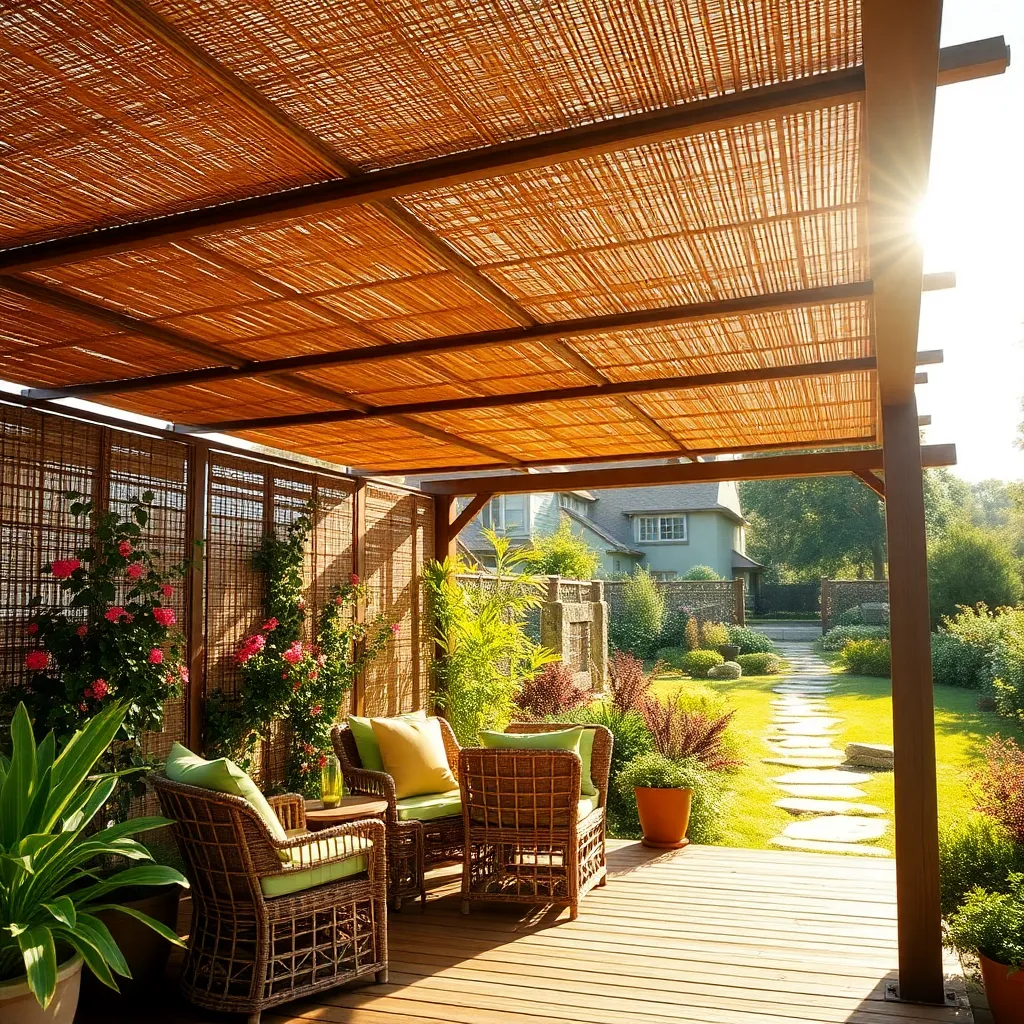
Bamboo or reed screens are an excellent choice for creating a natural, eco-friendly shade solution on your patio. These materials are not only sustainable but also provide a distinct, tropical aesthetic that enhances outdoor spaces. When installing, consider using panels that are at least 6 to 8 feet tall for optimal shade and privacy. For beginners, pre-assembled bamboo screens are available, making installation a simple weekend project.
For those with a bit more experience, customizing your screens can add a personal touch. Cut the bamboo or reed to fit your specific patio dimensions, using a reciprocating saw for precision. Secure the panels to a sturdy frame using galvanized wire or zip ties to prevent rusting. Consider adding a clear sealant to extend the life of the bamboo or reed, especially in humid climates. These screens not only provide shade but also allow for gentle air flow, making them perfect for warm summer days.
Implement Built-In Shade Panels
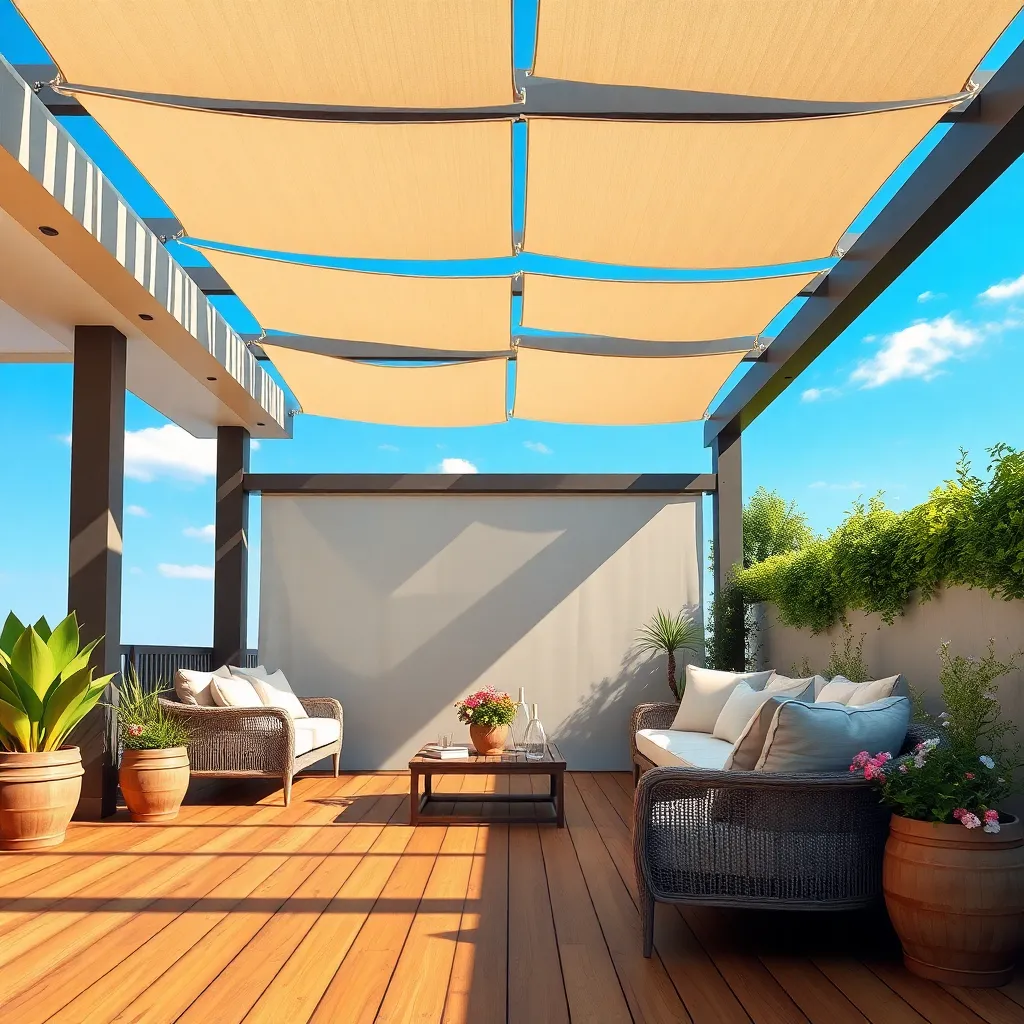
To enhance your patio with built-in shade panels, consider integrating adjustable louvers or slatted wood panels. These options not only provide flexible shade solutions but also allow you to control the amount of sunlight filtering through. For construction, use materials like cedar or aluminum, which are durable and weather-resistant. Beginners might start with pre-made panels, while seasoned DIYers can explore custom designs to perfectly fit their outdoor space.
When designing your built-in shade panels, it’s crucial to ensure they’re properly installed for both functionality and aesthetics. Position the panels to maximize shade during the hottest parts of the day, typically on the western or southern sides. For those looking to add a touch of style, consider painting or staining the panels to complement your existing patio decor. Advanced builders might incorporate a retractable option, using mechanisms such as pulleys or motorized systems for added convenience.
Employ Stylish Cantilever Umbrellas
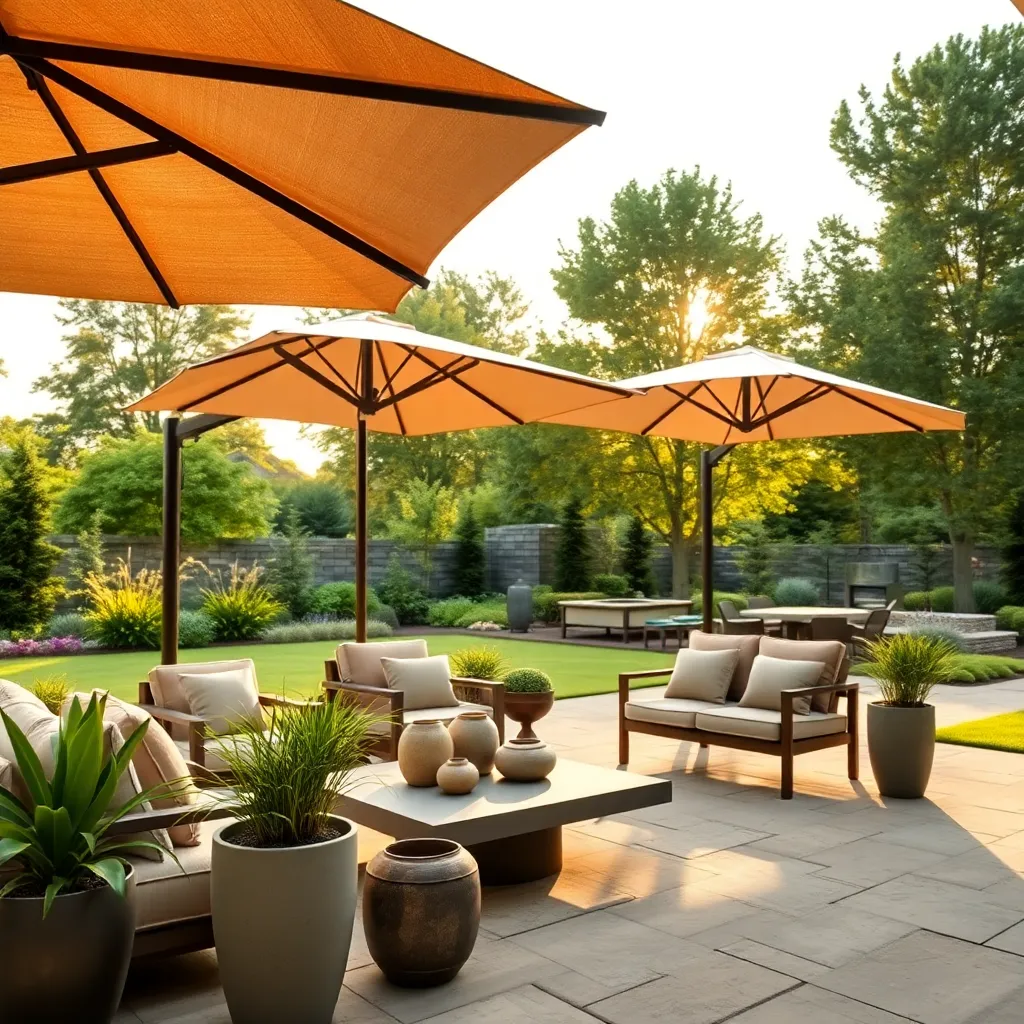
Transform your patio into a stylish retreat by employing cantilever umbrellas, which are both versatile and elegant additions for shade. These umbrellas stand out due to their unique design, offering an unobstructed overhead cover without a central pole. For a durable choice, consider umbrellas made from aluminum frames and solution-dyed acrylic fabrics, both of which are weather-resistant and require minimal maintenance. Beginners will find them easy to set up with adjustable tilting mechanisms, allowing for precise sun protection throughout the day.
To maximize the aesthetic appeal of cantilever umbrellas, coordinate the fabric color with your outdoor decor or landscape elements. Advanced users might explore models with integrated LED lighting or rotatable bases for added functionality and style. When selecting an umbrella, ensure it provides ample coverage; a canopy diameter of at least 10 feet is recommended for larger seating areas. By investing in a quality cantilever umbrella, you can enjoy a versatile and fashionable shading solution that enhances your outdoor living space.
Create a Living Plant Canopy
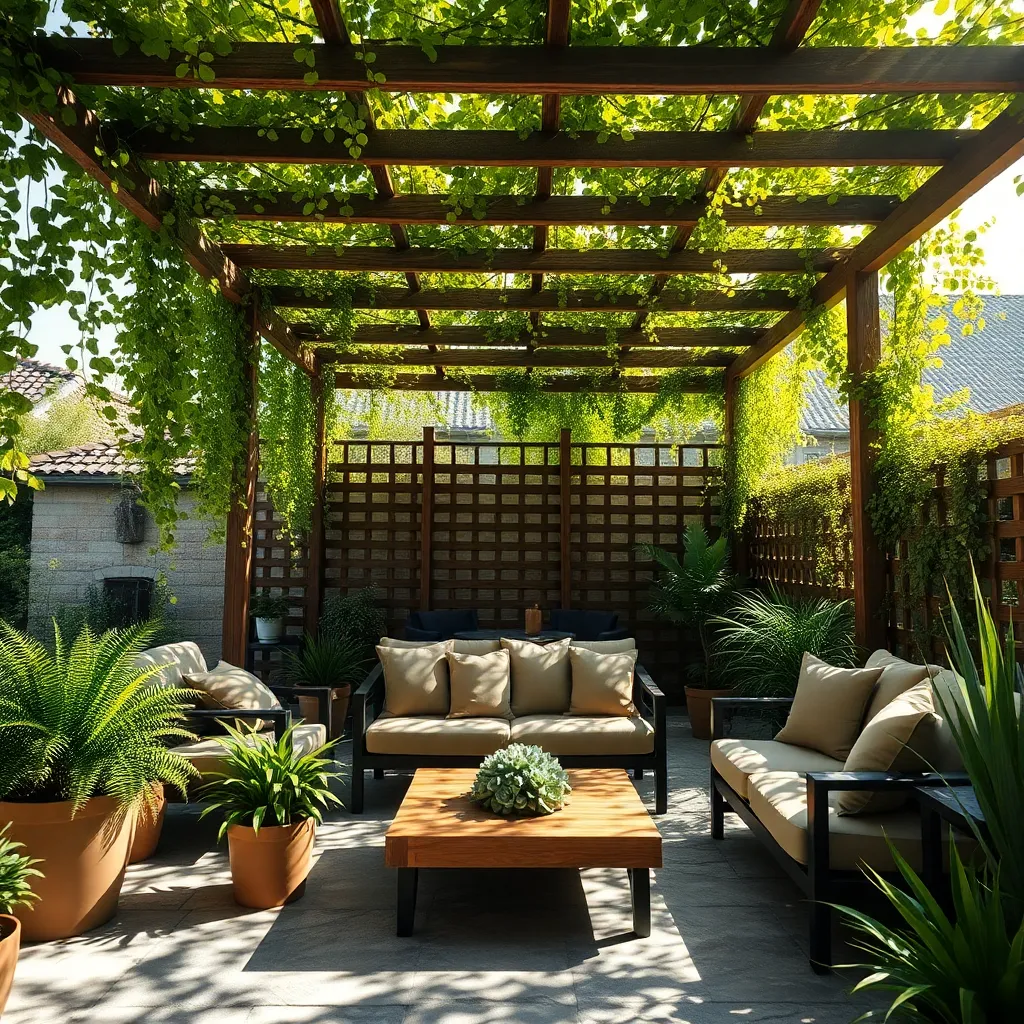
Transform your patio into a lush oasis by creating a living plant canopy. Begin by selecting fast-growing climbers like Wisteria, Clematis, or Honeysuckle that can quickly cover a trellis or pergola. These plants not only provide shade but also add fragrance and beauty. For beginners, install a basic wooden or metal pergola structure with dimensions that suit your space, typically around 8 feet tall and 6-8 feet wide. Securely anchor the structure to ensure stability against wind and weather.
Advanced gardeners might consider integrating a retractable shade system beneath the canopy for adjustable coverage. Use durable materials such as weather-resistant fabric or slatted wood panels that can be opened or closed as needed. For added flair, incorporate twinkling string lights to illuminate the canopy at night, creating a magical atmosphere. Regularly prune the plants to encourage growth and maintain the desired shape, ensuring your living canopy remains both functional and beautiful throughout the seasons.
Set Up a Slatted Wood Roof
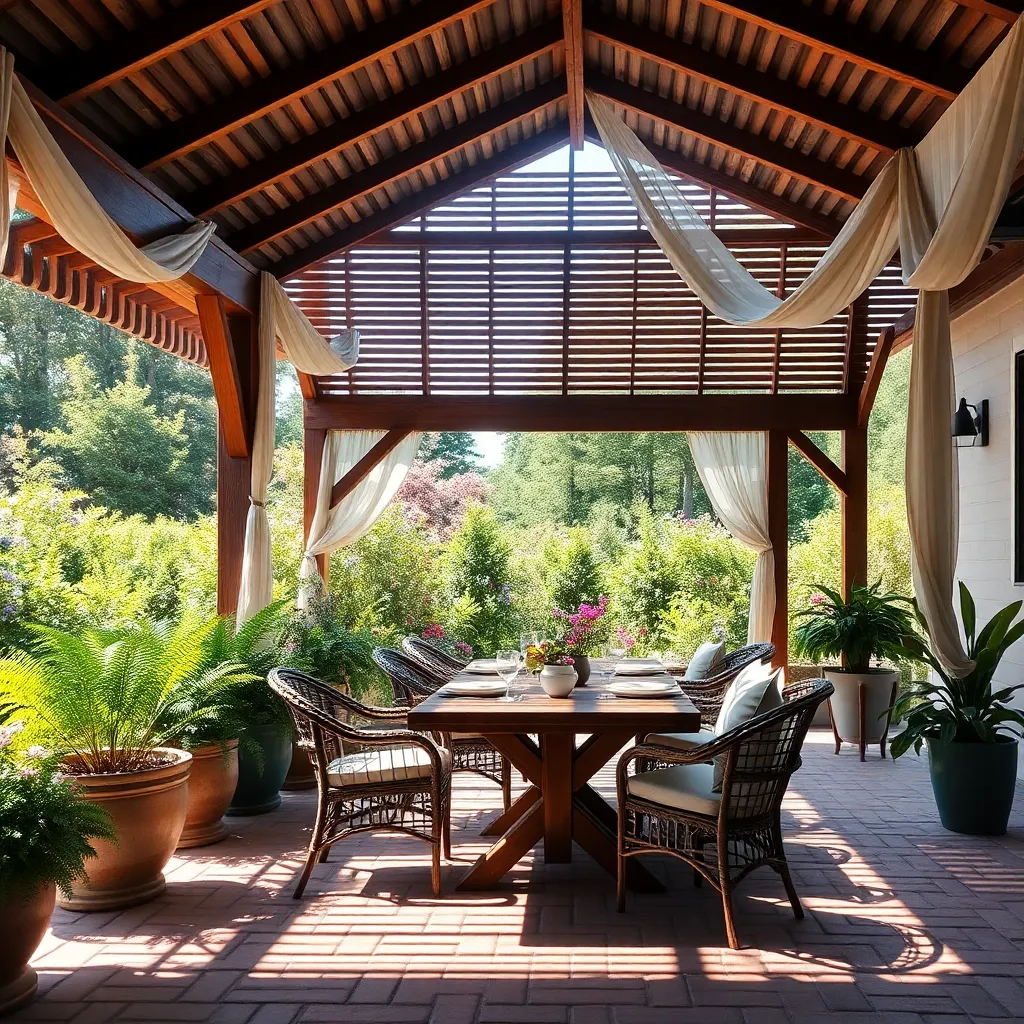
Installing a slatted wood roof can transform your patio into a stylish and functional outdoor space. For beginners, selecting durable, weather-resistant wood like cedar or pressure-treated pine is essential. These materials not only withstand the elements but also offer a classic aesthetic. When designing, consider spacing the slats evenly—about 1-2 inches apart—to balance shade and sunlight. This setup allows light to filter through, creating a dappled, inviting ambiance.
For a more refined touch, advanced DIYers can incorporate adjustable slats to control sunlight exposure throughout the day. Use stainless steel hardware to ensure longevity and prevent rust. If you want a seamless finish, consider painting or staining the wood to complement your home’s exterior. Additionally, to enhance durability, seal the wood annually to protect it from moisture and UV rays. These steps will help you create a slatted wood roof that’s both beautiful and functional for years to come.
Include a Weatherproof Fabric Cover
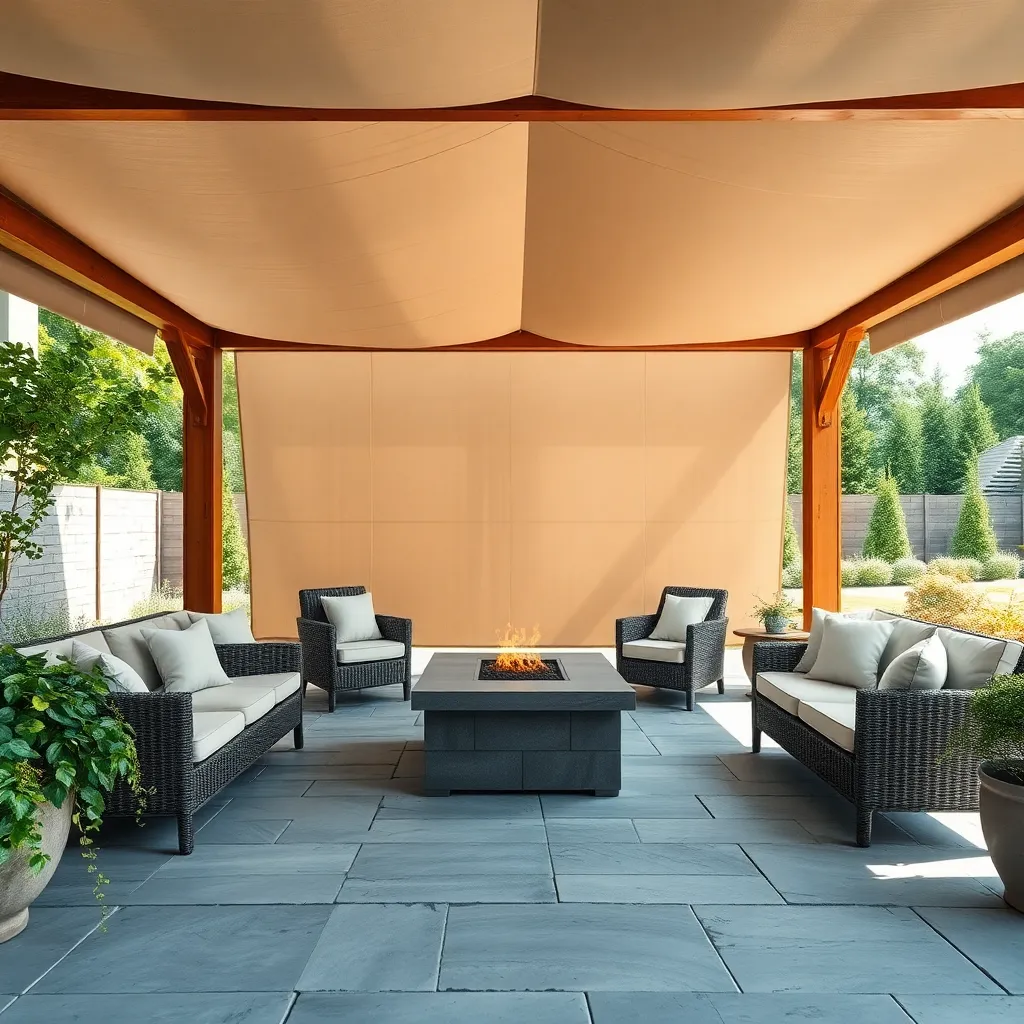
Adding a weatherproof fabric cover to your patio roof offers a versatile and durable solution for shade and protection. These covers are available in a variety of materials such as polyester and acrylic, known for their UV resistance and water repellency. For an easy installation, consider using a retractable awning kit. This allows you to extend or retract the cover based on weather conditions or personal preference, giving you control over your outdoor living space.
When selecting a fabric cover, pay attention to the durability and maintenance requirements. Opt for fabrics with a strong weave and a coating that resists mildew and fading. For a more permanent setup, secure the fabric over a sturdy frame made of aluminum or treated wood, ensuring it’s taut to prevent sagging. Advanced homeowners might integrate solar-powered motors for automatic retraction, combining convenience with cutting-edge technology. Remember, a well-chosen cover not only enhances your patio’s functionality but also adds aesthetic appeal.
Build a Rustic Timber Pergola

Building a rustic timber pergola is an excellent way to create a charming, shaded retreat in your backyard. Start by selecting sturdy, weather-resistant wood such as cedar or redwood, which are both naturally resistant to rot and insects. For beginners, using pre-cut pergola kits can simplify the process, while experienced DIYers might prefer purchasing raw materials to customize their design. Ensure your pergola posts are at least 4×4 inches thick for stability, and use galvanized bolts to secure the structure.
Consider adding design elements like crossbeams and rafters to enhance the pergola’s rustic appeal. Spacing the rafters about 12-24 inches apart will provide a balanced blend of sunlight and shade. For a more finished look, stain the wood with a natural color to highlight its grain and protect against the elements. Advanced builders can integrate climbing plants like wisteria or grapevines, which will eventually cover the pergola with lush foliage, adding both shade and a touch of nature to your outdoor space.
Choose UV-Resistant Patio Covers
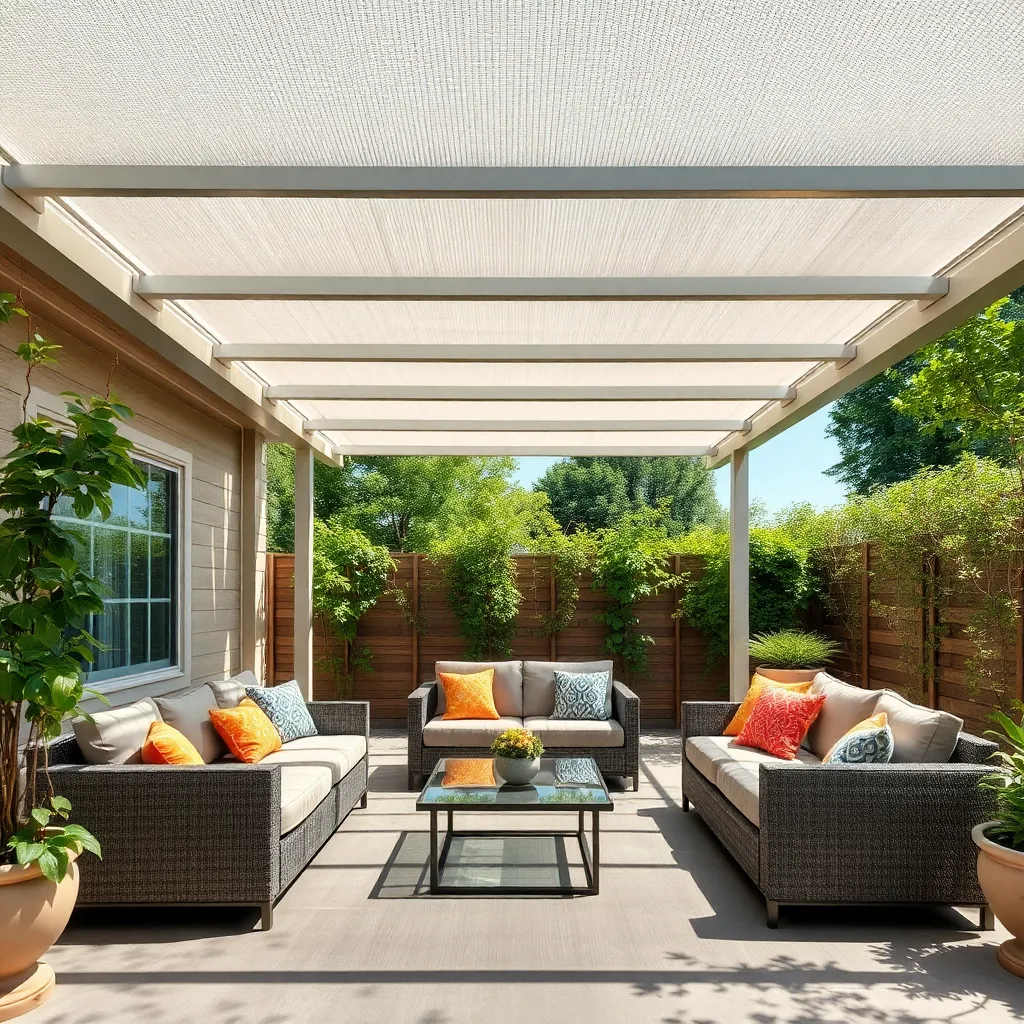
Choosing UV-resistant patio covers is an excellent way to protect your outdoor space from harsh sunlight while enhancing its overall appeal. Materials like polycarbonate and acrylic fabrics are top picks due to their durability and ability to block harmful UV rays. For a more traditional look, consider UV-treated canvas that’s both stylish and functional. Those seeking a modern aesthetic might opt for a sleek aluminum frame with a UV-resistant plastic cover, offering both protection and a contemporary edge.
When installing a UV-resistant patio cover, make sure to consider its size and placement for maximum coverage. Measure your patio area accurately to ensure the cover extends slightly beyond the edges, providing adequate shade throughout the day. For DIY enthusiasts, kits with pre-measured panels and easy-to-follow instructions can simplify the process. Advanced gardeners might explore integrating retractable options, allowing flexibility to enjoy sunshine and shade as desired. By investing in quality materials and thoughtful design, you can create a comfortable, long-lasting outdoor oasis.
Attach a Clear Polycarbonate Roof
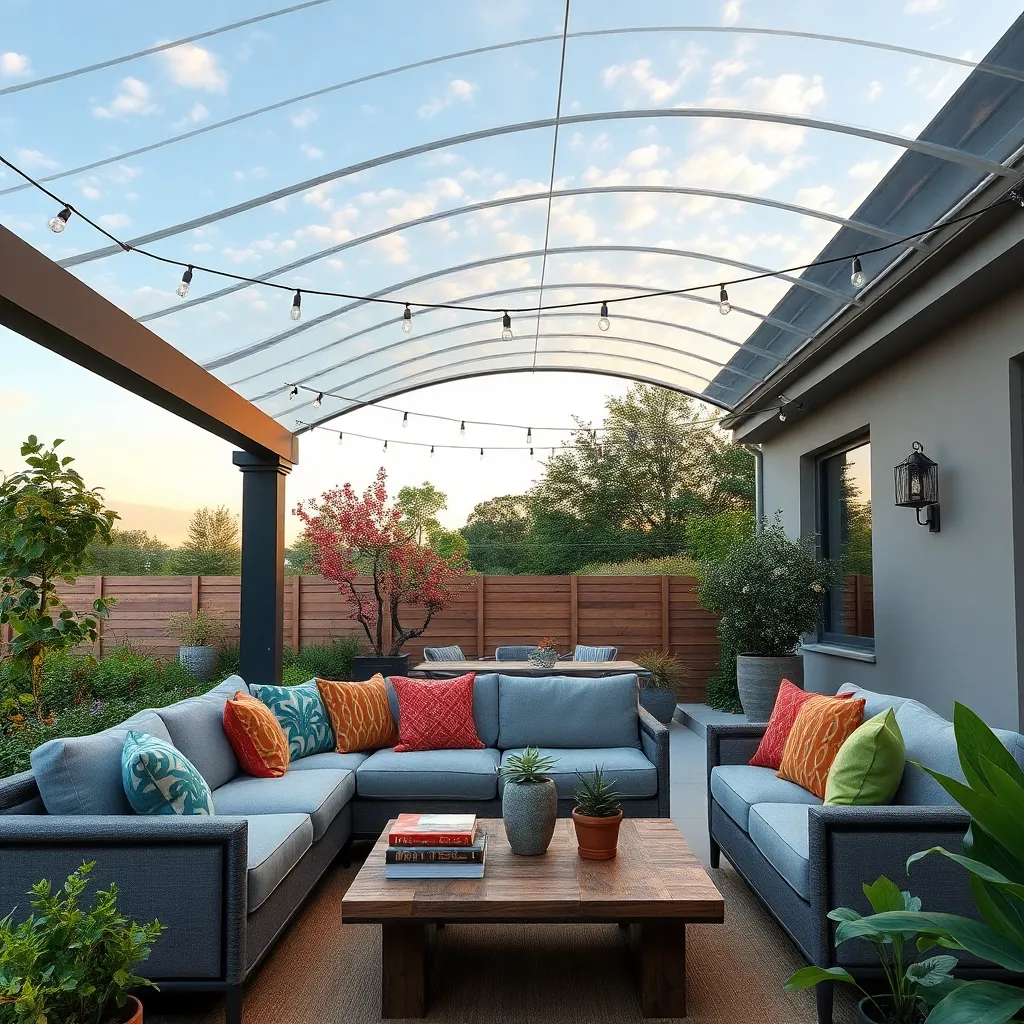
Attaching a clear polycarbonate roof to your patio is an excellent way to enjoy natural light while staying protected from the elements. Start by choosing a high-quality, UV-resistant polycarbonate sheet, typically available in thicknesses ranging from 6mm to 16mm. These sheets are lightweight yet durable, making them easy to handle and install. Ensure your patio’s framework can support the polycarbonate sheets by using treated wood or metal beams, both of which offer strong and lasting support.
For a seamless installation, cut the polycarbonate sheets to fit your patio’s dimensions, leaving a small overhang for rainwater runoff. Attach the sheets using self-tapping screws with weatherproof washers, spacing them about 12 inches apart to secure the sheets firmly in place. Consider adding a slight slope to prevent water accumulation and encourage drainage. For a more polished finish, install aluminum profiles along the edges to protect the sheets and enhance your patio’s aesthetic appeal. This approach not only offers practical coverage but also adds a sleek, modern touch to your outdoor space.
Design with Climbing Vines Aesthetics
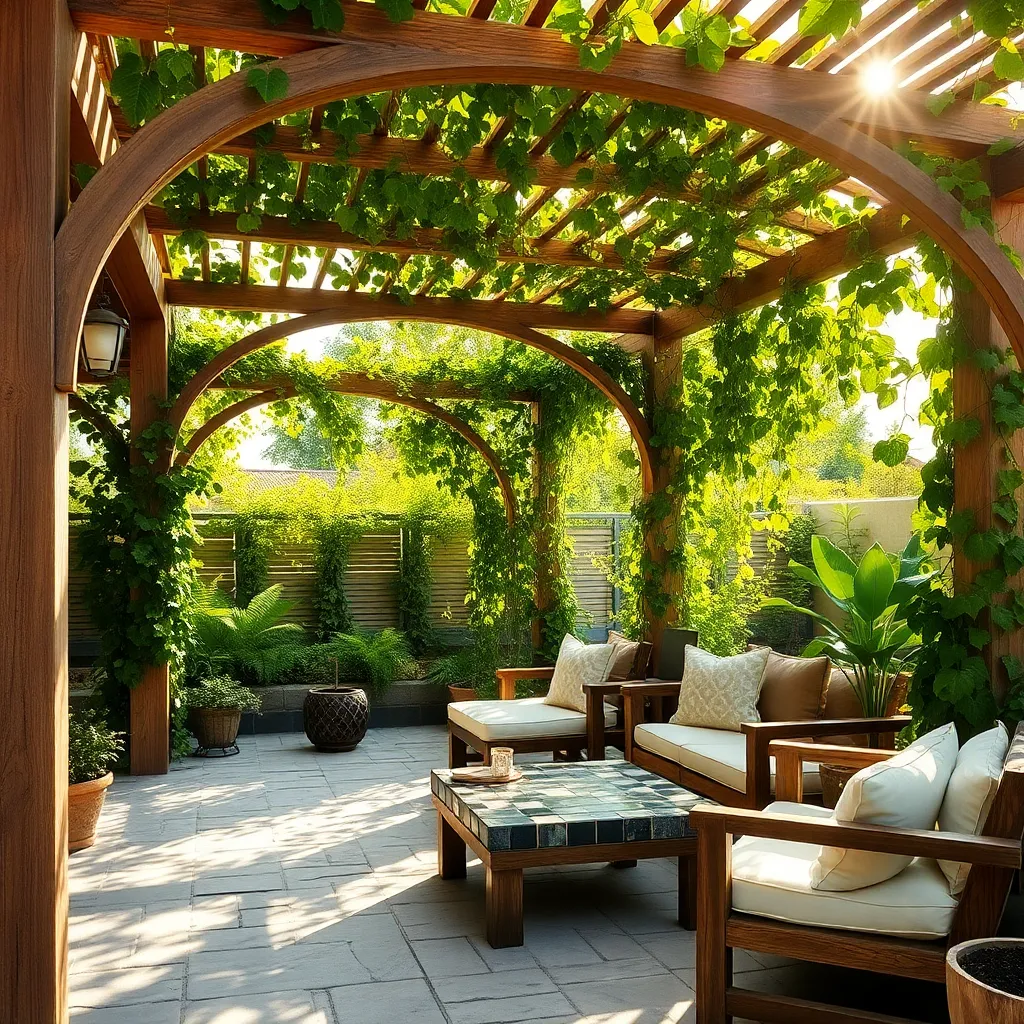
Incorporating climbing vines into your patio roof design not only enhances aesthetics but also provides natural shade. Start by selecting suitable vines such as **Clematis**, **Wisteria**, or **Trumpet Vine**, which are known for their robust growth and lush foliage. These plants can be trained to climb trellises or lattice panels attached to your patio structure. Ensure your support framework is sturdy—using materials like cedar or treated wood can withstand the weight and offer longevity. Beginners should focus on simpler structures, while seasoned gardeners might experiment with intricate patterns or incorporate decorative elements like arched trellises for added visual appeal.
For an efficient setup, position your patio to receive optimal sunlight that encourages healthy vine growth yet provides ample shade. An ideal spacing for your climbing plants is around **12-18 inches apart** to prevent overcrowding and ensure each vine receives adequate nutrients. Consider installing an irrigation system to maintain consistent moisture, which is crucial for thriving vines. For an advanced touch, intertwine different vine species to create a tapestry of colors and textures. Regular pruning and training will help maintain the shape and encourage dense foliage, creating a lush, green canopy that transforms your patio into a serene, inviting retreat.
Add a Metal Trellis Structure
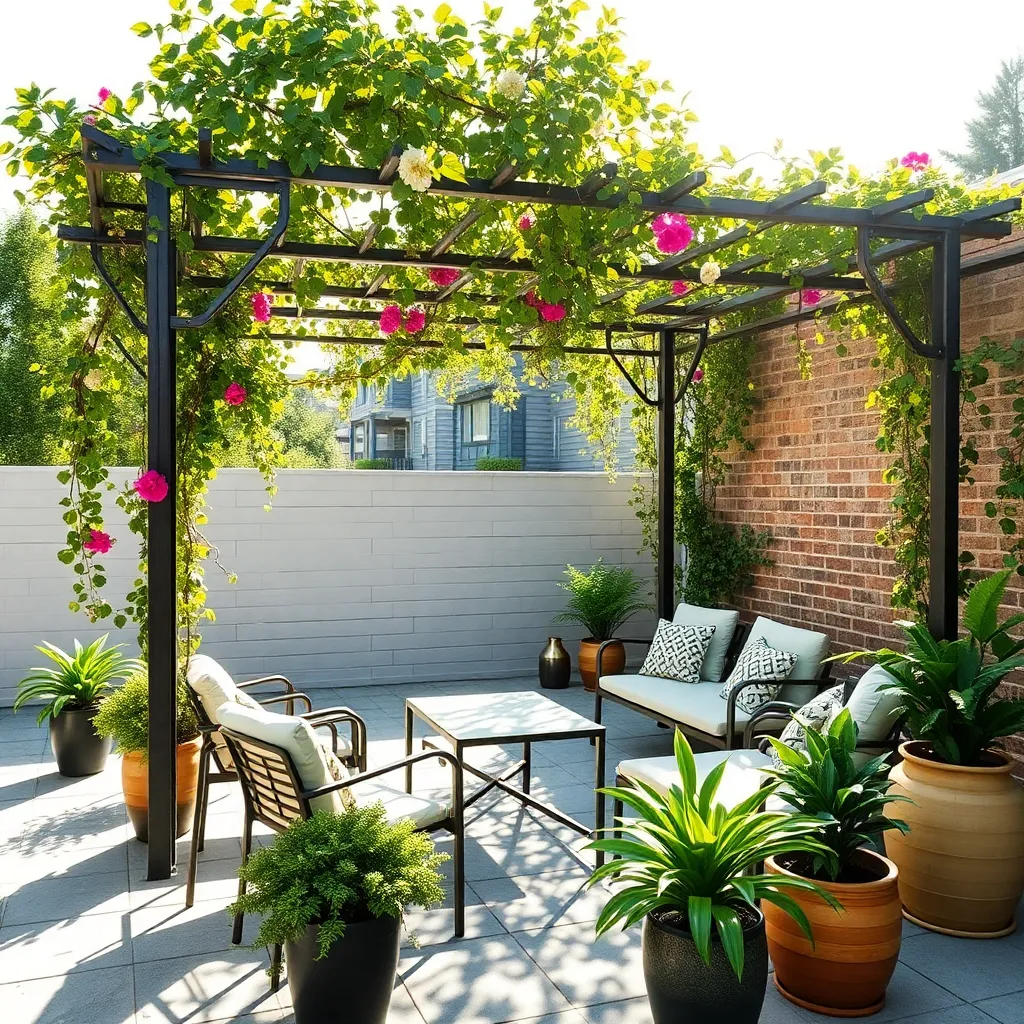
For a stylish yet functional addition to your patio, consider installing a metal trellis structure. This not only provides partial shade but also supports the growth of climbing plants, enhancing the natural aesthetics of your outdoor space. Opt for materials like galvanized steel or powder-coated aluminum for durability and weather resistance. These materials are both rust-resistant and able to withstand various climates, making them ideal for long-term use.
When designing your metal trellis, think about the dimensions that will best suit your space and desired level of shade. A structure that stands at least 8 feet tall and spans the width of your patio can offer ample coverage while still feeling open. For advanced customization, incorporate decorative elements such as ornate patterns or integrated seating. This approach not only boosts the visual appeal but also provides a cozy area for relaxation. As climbing plants like wisteria or clematis grow over time, they will naturally enhance the shade provided by your trellis.
Select Solar-Powered Shade Solutions

For an eco-friendly and efficient approach to patio shading, consider using solar-powered shade solutions. These systems integrate solar panels directly into the materials of your patio cover, allowing you to harness sunlight to power lights, fans, or other outdoor electronics. A basic setup involves attaching flexible solar panels to an existing pergola or awning, ensuring the panels are positioned for maximum sun exposure throughout the day. Beginners can start with a small, pre-assembled kit that includes panels and basic wiring, while those with more experience might opt for a custom installation that powers additional outdoor features.
To maximize the effectiveness of solar-powered shade solutions, choose materials like polycarbonate or tempered glass that allow sunlight to penetrate while offering durable protection. These materials are not only lightweight and weather-resistant but also enhance the aesthetic appeal of your outdoor space. For advanced users, consider integrating a smart system that automatically adjusts the position of the panels based on the sun’s angle, which optimizes energy capture and provides consistent shade. Whether you’re new to solar technology or an experienced DIY enthusiast, these solutions offer a sustainable way to enhance your patio.
Incorporate a Pergola with Curtains

Adding a pergola with curtains to your patio can transform your outdoor space into a stylish and functional retreat. Start by selecting durable materials such as cedar or pressure-treated wood for the pergola’s structure, ensuring longevity and resistance to the elements. For a modern touch, consider using metal frames combined with weather-resistant fabric for the curtains, which offer both shade and privacy. Ensure the pergola dimensions suit your patio size; a standard size of 10×10 feet is often ideal for most backyard settings.
Once your pergola is in place, incorporate curtains made from outdoor-friendly fabrics like Sunbrella, which provides excellent UV protection and is mildew-resistant. Use stainless steel or coated aluminum curtain rods to prevent rust, and install tiebacks or weights at the bottom to keep the curtains from flapping in the wind. For advanced customization, consider adding curtain tracks for easy opening and closing, allowing you to adjust the level of shade throughout the day. These small details can significantly enhance the comfort and aesthetics of your outdoor living area.
Utilize Shade Cloth for Flexibility
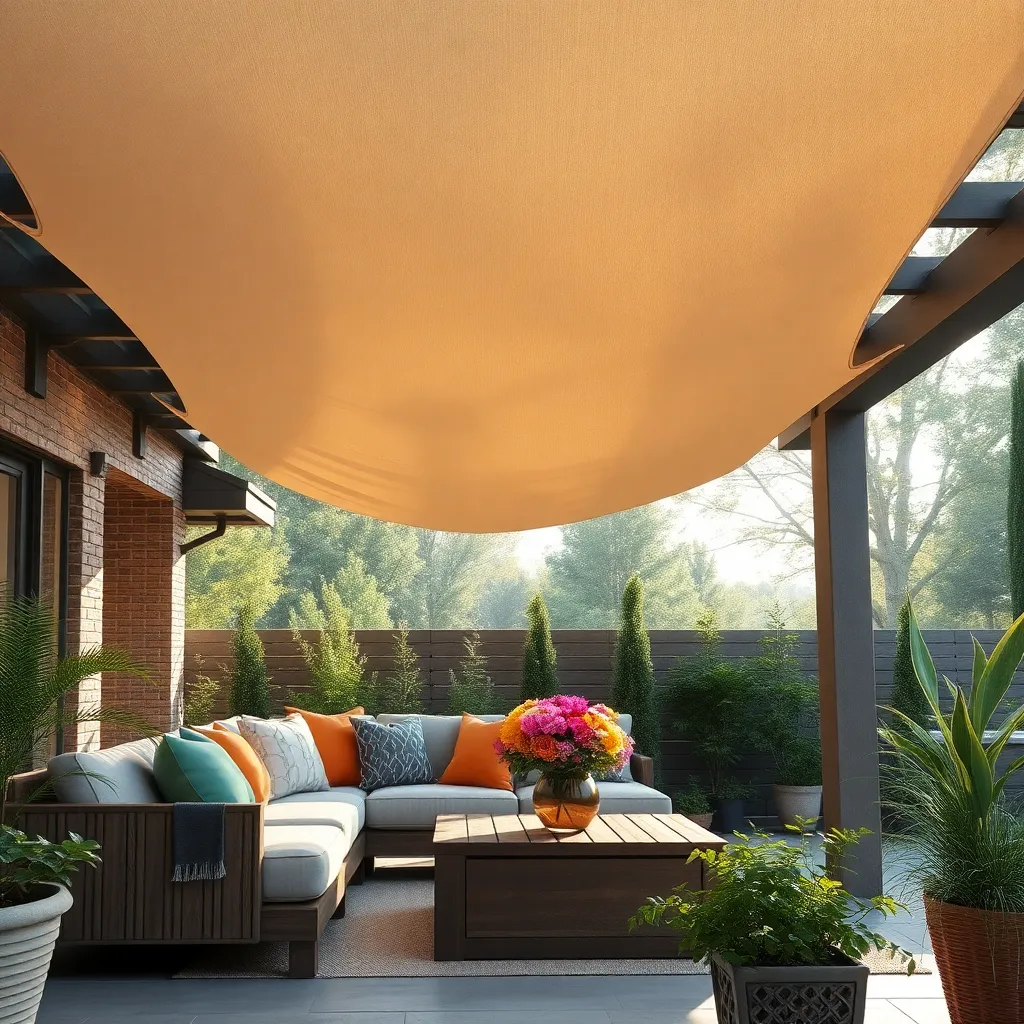
Shade cloth is a versatile solution for homeowners looking to add flexible shade to their outdoor spaces. It is available in various densities and colors, allowing you to control the amount of sunlight that filters through, which is especially useful for protecting delicate plants or creating a comfortable seating area. To install, use durable hooks or grommets to attach the cloth securely to existing structures, like pergolas or posts, ensuring it can withstand wind and weather.
For a more polished look, consider using tensioned cables to hang the shade cloth tautly, minimizing sagging and enhancing the aesthetic appeal. Advanced gardeners might opt for retractable systems, which provide the flexibility to adjust shade coverage as needed throughout the day. When selecting materials, opt for UV-stabilized fabrics to ensure longevity and effectiveness in blocking harmful rays. With these tips, your patio can become a dynamic, shaded retreat tailored to your specific needs.
Implement a Modern Louvered Roof
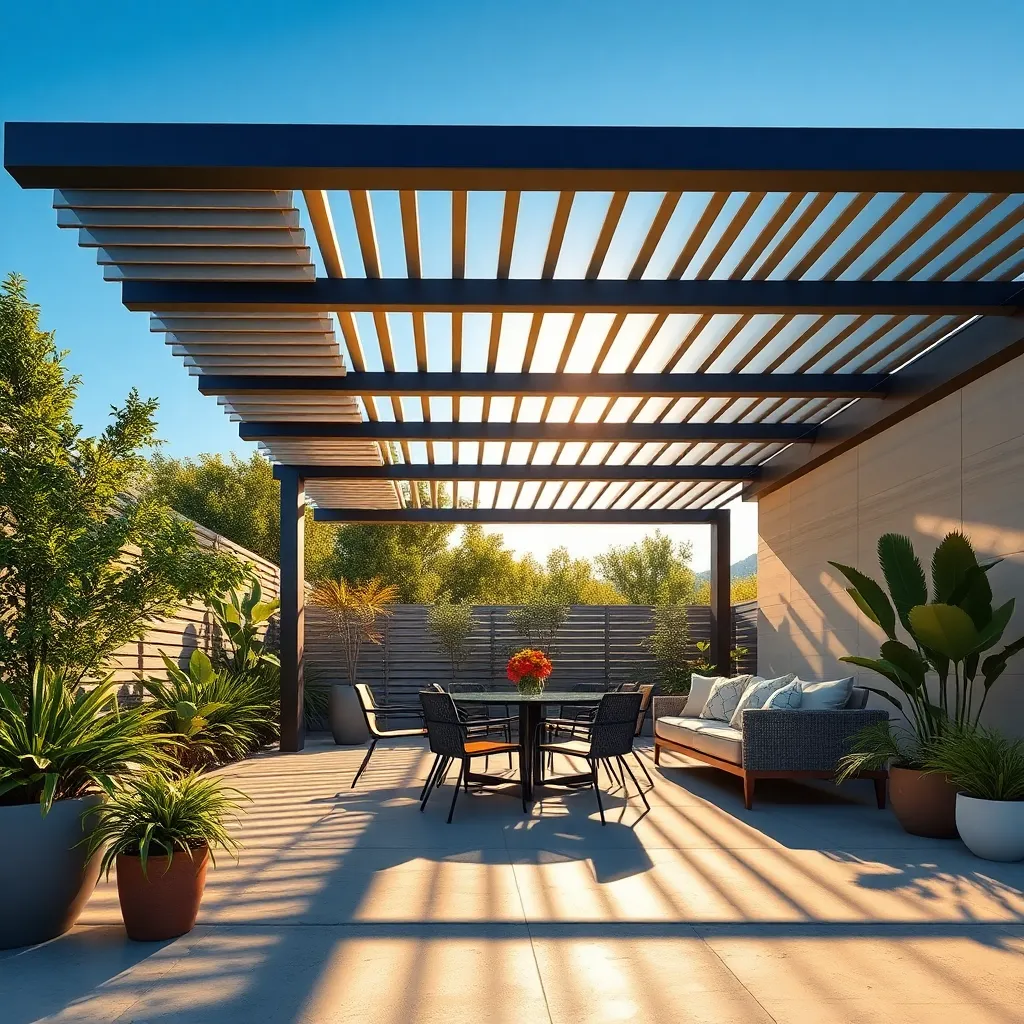
Implementing a modern louvered roof can transform your patio into a versatile outdoor living space. These roofs feature adjustable slats, allowing you to control the amount of sunlight and airflow. For beginners, consider aluminum or powder-coated steel, as these materials are durable and low-maintenance. Opt for an automated system with remote control or smartphone integration for ease of use. These systems can provide shade during the hottest parts of the day and let light in when it’s cooler, making your patio usable year-round.
To create a sleek, contemporary look, integrate the louvered roof with your existing patio design. Match the color and finish of the louvers with your home’s exterior or patio furniture for a cohesive appearance. Advanced DIYers might explore solar-powered options, which can enhance energy efficiency by reducing the need for additional cooling.
- Ensure proper measurements
- Consider hiring a professional for installation
- Regularly clean and lubricate the louvers to maintain functionality
With these actionable tips, your patio will not only look modern but also offer practical, adaptable comfort.
Craft a Corrugated Metal Canopy
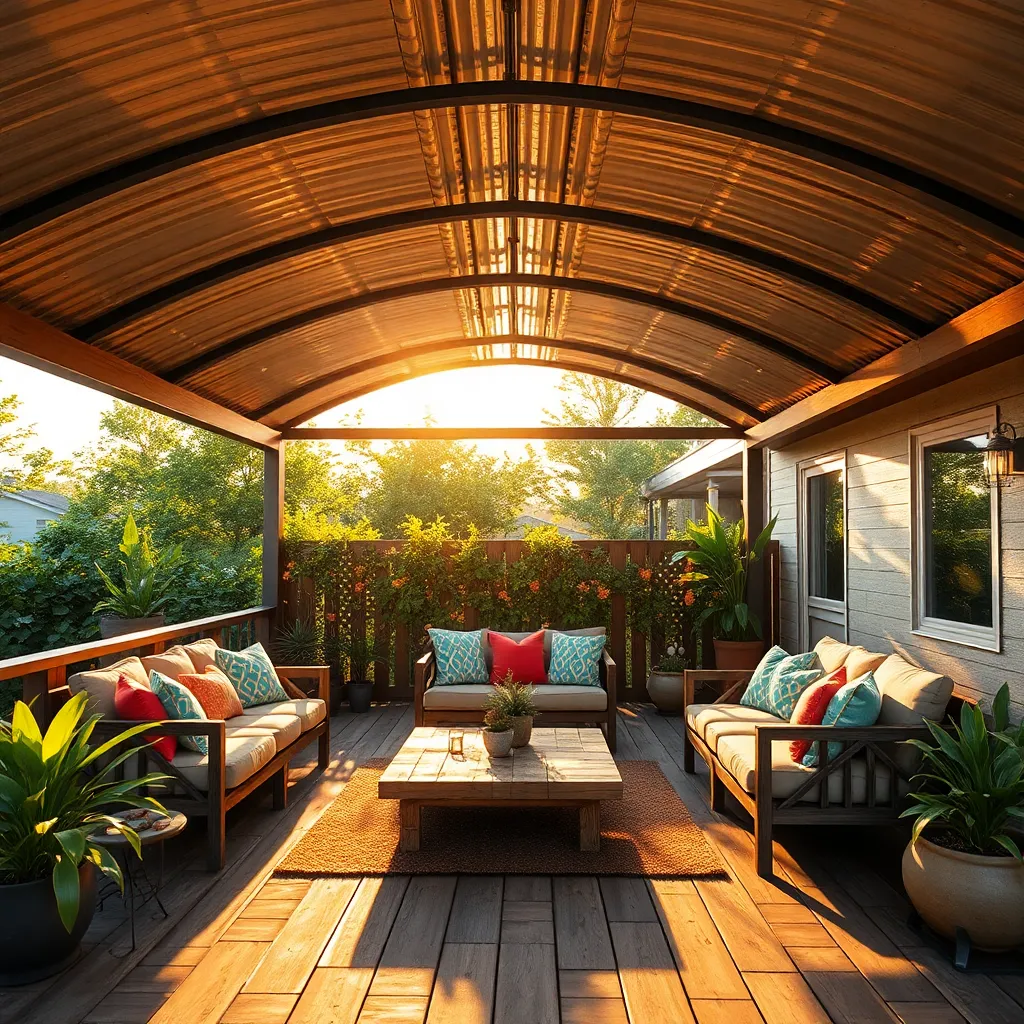
For a durable and stylish patio roof, consider crafting a canopy with corrugated metal sheets. This material is not only cost-effective but also provides excellent protection against sun and rain. Start by measuring the area you wish to cover, ensuring your canopy is both functional and visually appealing. You’ll need to secure the metal sheets onto a sturdy frame made of treated wood or metal beams, using galvanized screws to prevent rust. For beginners, pre-drilled holes in the sheets can make installation easier. If you want to add a touch of elegance, paint the metal sheets with a weather-resistant finish in a color that complements your outdoor decor.
Advanced DIY enthusiasts might want to angle the canopy slightly to allow water runoff and prevent pooling. Additionally, adding insulation panels beneath the metal can help manage heat levels on sunny days. Consider integrating translucent panels to let some light through without losing shade, creating a more inviting atmosphere.
- Choose metal sheets with a gauge of 26 or 29 for optimal durability.
- Ensure your structure can withstand local weather conditions by reinforcing joints and supports.
- Regularly check for loose screws and fix any leaks to maintain the integrity of your canopy.
With these tips, your corrugated metal canopy will not only enhance your patio’s functionality but also its aesthetic appeal.
Install Customizable Shade Structures
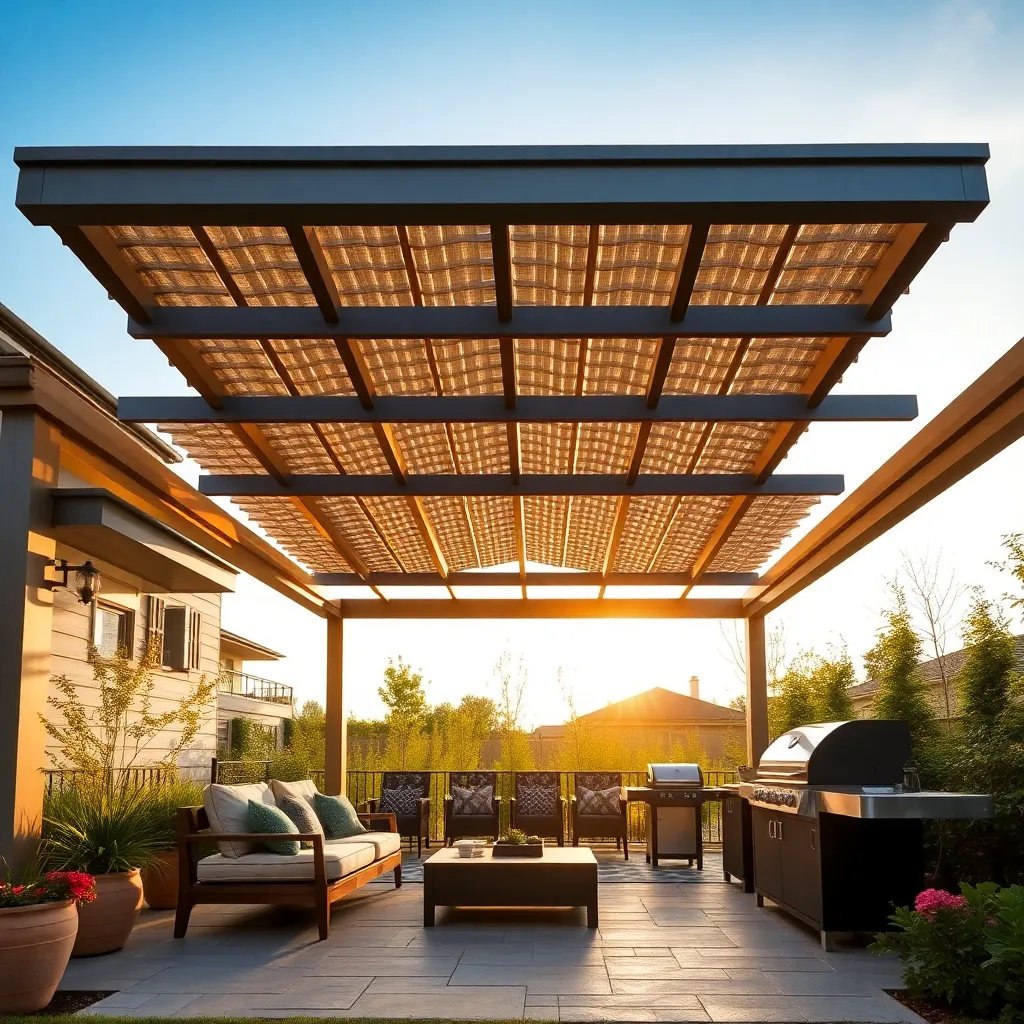
For an adaptable outdoor solution, consider installing customizable shade structures that can be tailored to your patio’s specific needs. These structures often feature modular components, allowing you to adjust the amount of shade and coverage easily. Opt for materials like weather-resistant aluminum or treated wood, which provide durability and a sleek look. Beginners can start with basic kits that include detailed instructions, while more experienced DIYers might explore custom builds incorporating retractable canopies or adjustable louvers for enhanced flexibility.
When designing your shade structure, think about incorporating elements that enhance both functionality and aesthetics. Consider adding elements like integrated lighting or climbing plants to the structure to create a cozy ambiance. Ensure your design provides adequate ventilation and doesn’t obstruct views, especially if you’re in a scenic area. Use a level and measuring tape to maintain precision in your construction, and remember that securing your structure to a stable foundation is crucial for safety and longevity. With the right materials and thoughtful planning, your customizable shade structure can become a versatile extension of your outdoor living space.
Conclusion: Creating Beautiful Outdoor Spaces
In exploring the 20 Shade-Providing Patio Roof Ideas, we’ve uncovered a variety of creative ways to enhance your outdoor space while fostering a harmonious environment. From the intimacy of pergolas and the versatility of retractable awnings to the rustic charm of wooden trellises and the modern elegance of glass canopies, each idea offers a unique opportunity to create shared moments of relaxation and connection. These concepts remind us that just like a well-designed patio, relationships thrive with a balance of structure, flexibility, and the right amount of shade to protect and nurture love.
As an actionable next step, consider selecting one patio roof idea that resonates with your lifestyle and start a conversation with your partner about implementing it together. This collaborative project can strengthen your bond and serve as a tangible reminder of your commitment to shared growth.
Don’t let these inspiring ideas slip away—bookmark this article now to revisit whenever you’re ready to transform your space. Remember, a thriving relationship, like a beautiful patio, requires ongoing care and creativity. By taking steps today, you’re investing in a future full of love, comfort, and shared success. Here’s to building a space—and a relationship—where you both can flourish.

